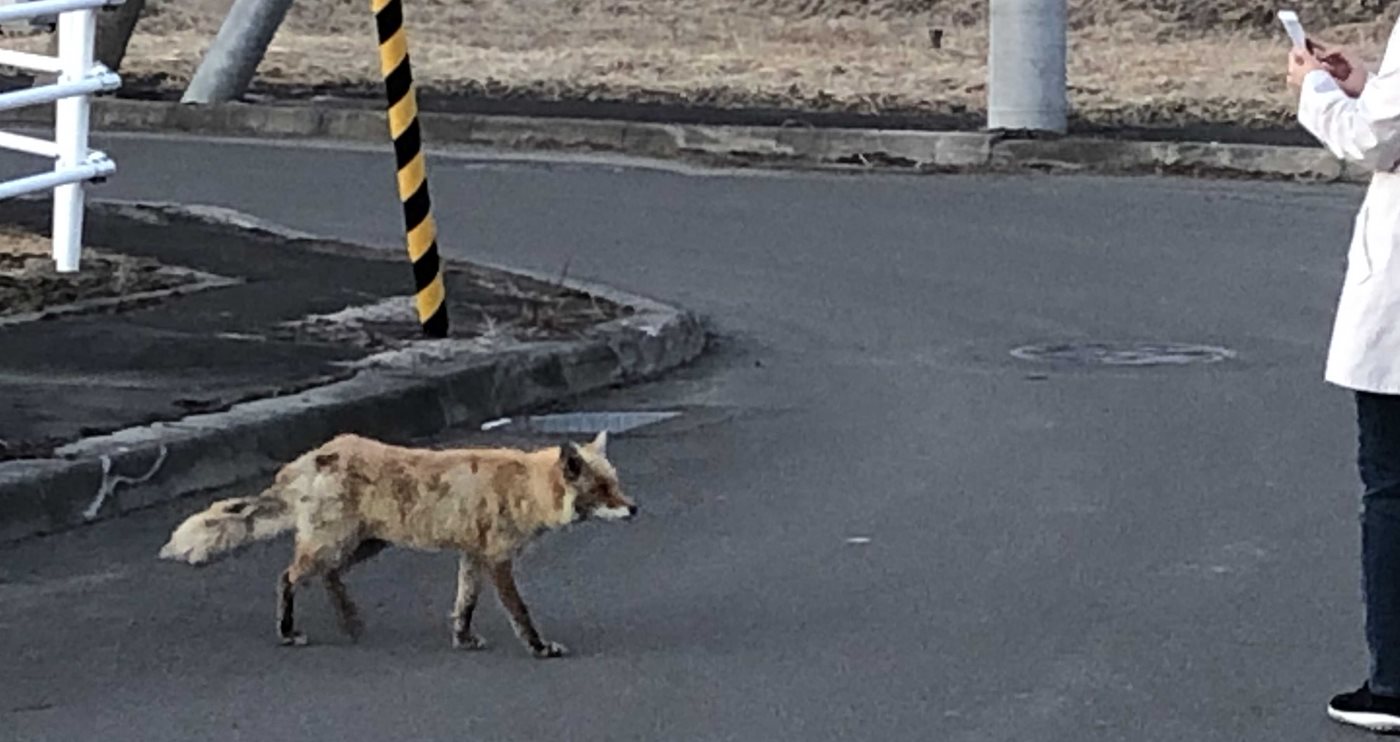April 2019

Here in East Hokkaido, Japan, Kushiro has its own assortment of wild residents, and they are surprisingly unafraid of humans or traffic.
I’ve driven past huge sika deer grazing by the roadside so close that you could practically reach out of your car window and touch them. This country’s legendary red crowned cranes can be spotted in areas feeding just on the edge of town. Once while driving I had to yield to a huge crane crossing the street, acting like it owned the place. A particularly thrilling moment came when I spotted dozens of Steller’s’ sea eagles perched on sea ice in a harbor not too far from here.
Asian northern foxes are surprisingly common in Kushiro, and not nearly as shy was I would have thought. There are a few foxes resident in my neighborhood. They seem to come down from the hill to find forage, and they can turn up at any time of day. The top picture shows one wandering about in broad daylight just as I was about to set out for lunch.
These are harmless examples. Unfortunately rising encounters between Japanese and wildlife doesn’t always end well.
This nation suffers from a relatively high rate of bear casualties and fatalities. The arrival of spring sees older people venturing into the woods surrounding the edges of towns in search of wild vegetables to harvest. If they go alone then too often they run into huge higuma (brown bears) awoken from hibernation and out looking for their own food. A cousin of the grizzly, when a higuma is surprised by a human the result is almost always deadly for the poor unfortunate nature enthusiast.
The authorities here do their best to sound the alarm, posting notices of bear sightings everywhere and urging wild vegetable fans to never travel out in the woods alone but to always travel in groups and make plenty of noise while hiking. But every year far too many ignore this advice unfortunately.
--- Nathanial Gronewold
Nathanial Gronewold is a Masters student in the College of Agriculture & Life Sciences